
Content - Richard Lundström
Layout - Sebastian Bianchi
Officers' "Old Style" ribbon bars, 1870s-1915
As previously mentioned, this was the only style worn by army officers until 1915. Obverses and reverses of a number of examples are shown here, with notes where there is something out of the ordinary. Most of these Old Style ribbon bars used tinned steel metal backings, but brass may also be found less commonly.
Three typical obverses;
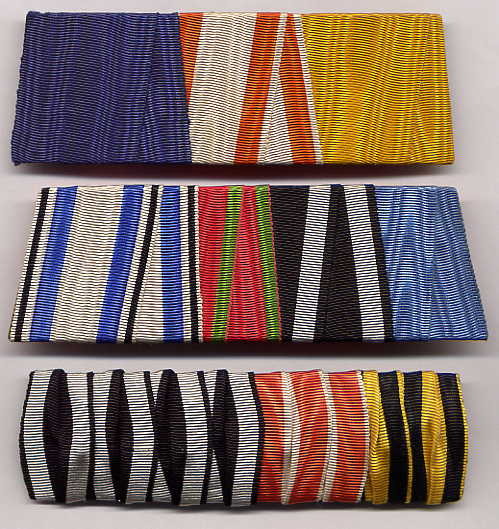
The top bar might seem to be mismounted, but what we have here is a regulation bar for an Offizier-Stellvertreter or Feldwebelleutnant, correctly wearing his Prussian XV Years Service Cross before a Red Eagle Order MEDAL, and then 1897 Wilhelm I Centenary Medal. The middle bar is unusual, since Bavarian officers did not often wear this Prussian style. With no devices, the last ribbon could be a Prussian Crown Order (peacetime) or a Württemberg Friedrich Order-with or without swords. The last bar is a typical South German style, here for the Prussian Iron Cross, Prussian Hohenzollern House Order with Swords (probably), Prussian Red Eagle Order, and Württemberg Military Merit Order. There are clips under the obverses of each ribbon for conversion to a full-size medal bar, as was common, but this piece obviously was never used that way.
Reverses of the same three bars;
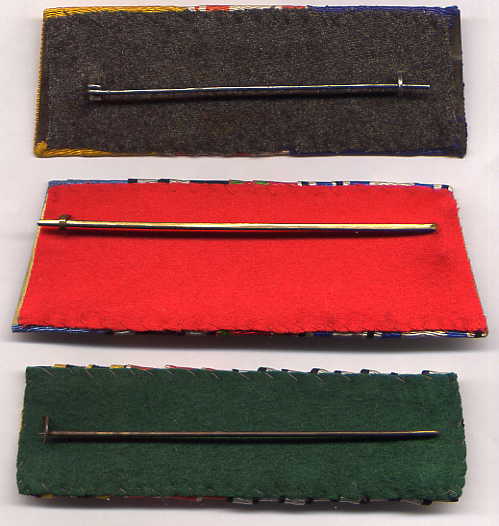
Note the Feldgrau backing on the top bar, dating this 1910+. Most, even wartime ones, used the traditional red backing as shown on the center piece. The bottom bar probably dates from the 1920s, since it has a needle pin.
Here is a variant of the South German style (more found later in this article), showing what at first appears to be a "homemade" bar bizarrely using the full sized swords removed from the actually Bavarian Military Merit Cross 2nd Class with Swords (here on the "war merit" rather than "bravery" ribbon), and only a SINGLE drape of each ribbon rather than the normal doubled folds. Yet these swords and style bar were commercially available into the 1930s.
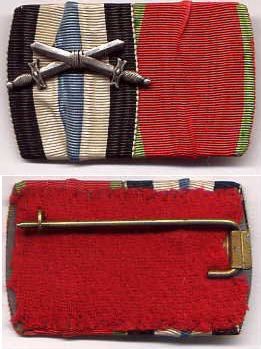
Naval Trapezoids
Here I will show all three types together for side by side comparison. On top is the original, pre-WWI sew on style, in the center the wartime-1930s pinback variety, and lastly a late 1930s sew on type. I have never seen this style worn with WW2 awards by any naval personnel in uniform.
Obverses;
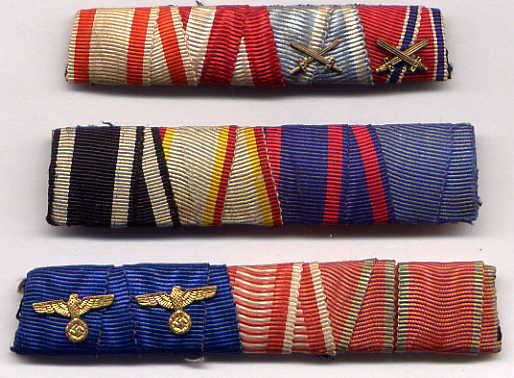
The upper 2 bars have already been seen and attributed. The bottom bar is the lower row of two rows worn by later Grossadmiral zS and last Führer of the German Reich, Karl Dönitz (1891-1980). Rather atypically, the usual Austrian and Turkish devices are NOT used here. While several other officers might have worn these same ribbons-depending upon what devices might have been worn-none of them had the German awards that would have made for a similar length row of German ribbons above. Because the Austro-Hungarian ribbon is worn after the Wehrmacht long services, this bar dates October 1936 to summer of 1938.
Reverses;
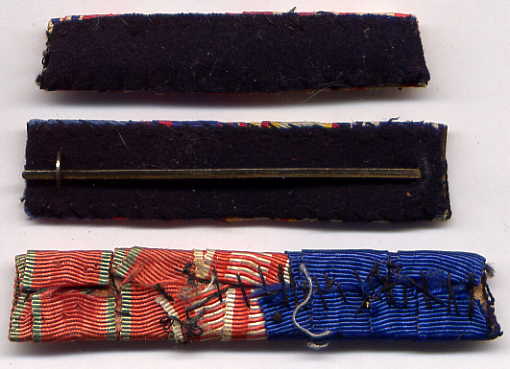
The top bar uses a navy blue backing, as does the middle bar. The lower, now unraveling, has only a typical pale flexible brown fiber interior stiffener.
![]()
© Copyright Wehrmacht-Awards.com LLC |